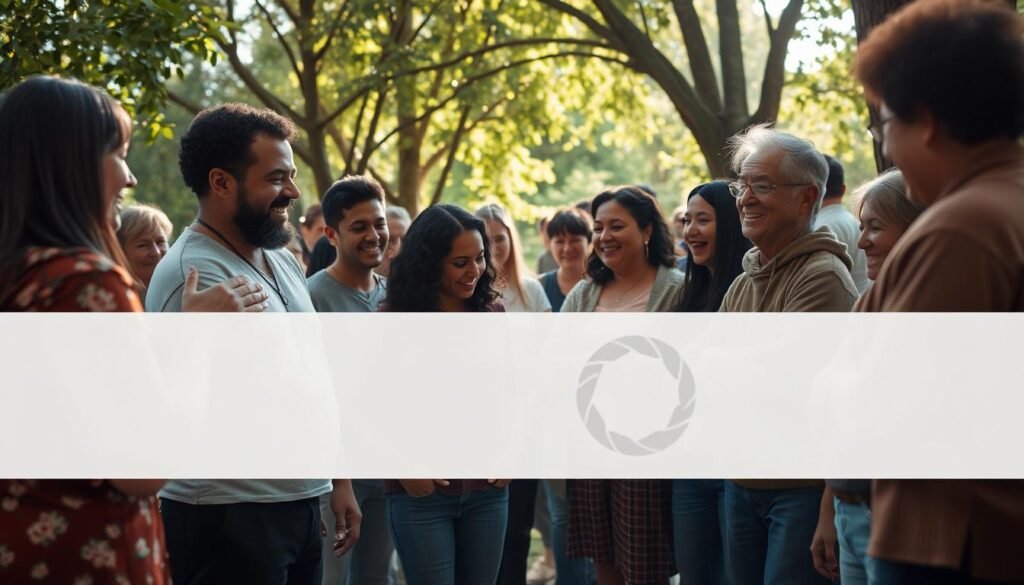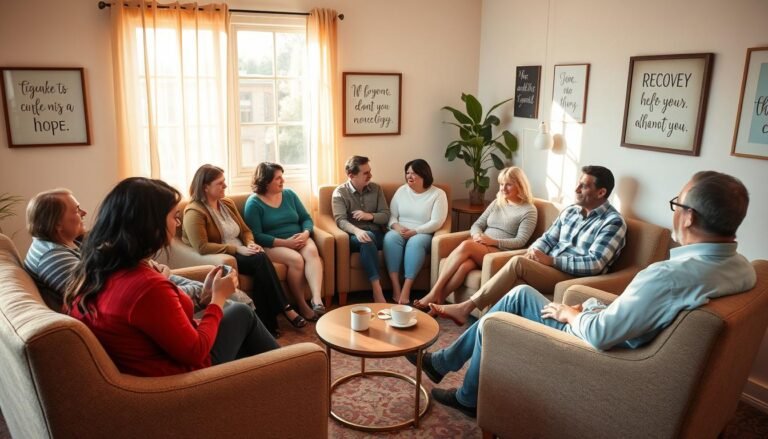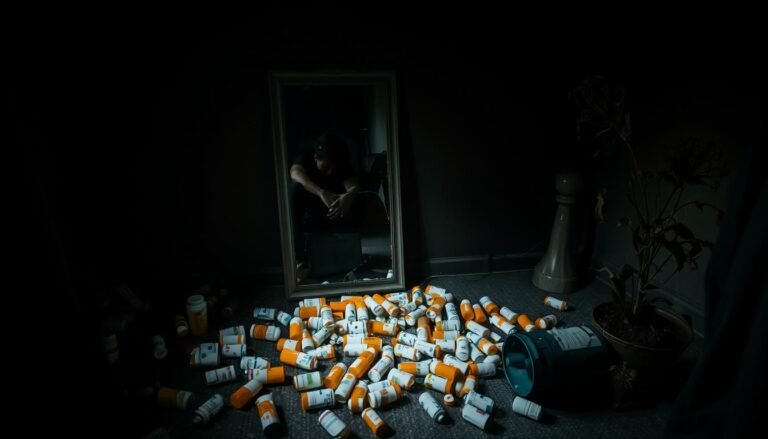Prescription Drug Addiction Therapy: Heal Your Mind and Body
Every year, about 14.3 million people misuse prescription drugs in the U.S. This shows how big a problem prescription drug addiction is. It’s a treatable condition that can be healed with the right therapy. This therapy helps both the mind and body, leading to long-term recovery.
For the latest on addiction and recovery, check out sites like addictionhotlinetoday.com, habitrecovery.com, and rehabme.org. These sites offer great info on treating prescription drug addiction. They also talk about the importance of mental health support in recovery. By getting help and joining a recovery program, you can start living a healthier life.
Key Takeaways
- Prescription drug addiction affects millions of people worldwide, with approximately 14.3 million people misusing prescription drugs in the United States in 2021.
- Prescription drug addiction therapy is a key step to healing mind and body, and it’s important to know addiction can be treated.
- With the right approach, people can beat addiction and find lasting recovery through a recovery program and mental health support.
- For the latest on addiction and recovery, visit sites like addictionhotlinetoday.com, habitrecovery.com, and rehabme.org.
- Getting help and joining a recovery program is the first step to a better life. Prescription drug addiction therapy helps heal the mind and body.
- Prescription drug addiction therapy, healing mind and body, and mental health support are key to a successful recovery journey.
- Understanding the risks and consequences of prescription drug abuse helps prevent addiction. It also encourages seeking help when needed.
Understanding Prescription Drug Addiction and Its Impact
Prescription drug addiction is a big problem worldwide. It affects millions of people. The National Institute on Drug Abuse says three types of drugs are often misused: opioids, CNS depressants, and stimulants.
Each type works differently in our bodies and minds. Knowing this helps us find the right treatment.
A holistic approach to addiction treatment is key. It looks at the physical, emotional, and mental sides of addiction. This method, along with substance abuse rehabilitation and drug addiction counseling services, helps people beat their addiction.
Some signs of prescription drug addiction include:
- Changes in appetite and sleep patterns
- Mood swings and irritability
- Withdrawal symptoms when trying to stop or cut down
- Need for more of the drug to feel the same effect
Prescription drug addiction can harm our health a lot. It can lead to overdose, breathing problems, and more. But, with help and support, people can get better and live a healthier life.
The Journey to Recognition: Accepting the Need for Help
It’s key to know when you need help. Bridging the Gaps says it’s important to understand and not judge. Family and friends can help by setting limits and getting professional help.
A mental wellness program helps a lot. Medication-assisted therapy and dual diagnosis treatment help with both body and mind. By asking for help, you start your path to healing.
Some important steps in recovery are:
- Getting professional advice
- Setting limits and finding support
- Joining a mental wellness program or therapy
By doing these things, you can fight addiction and live a better life. With the right help, you can manage your addiction and find wellness.
| Aspect of Recovery | Importance |
|---|---|
| Mental wellness program | Provides tools and support for overcoming addiction |
| Medication-assisted therapy | Addresses physical and emotional aspects of addiction |
| Dual diagnosis treatment | Effective in addressing co-occurring mental health conditions |
How Prescription Drug Addiction Therapy Heals Mind and Body
Prescription drug addiction therapy helps with the physical, emotional, and mental parts of addiction. A good addiction recovery program mixes medical care, counseling, and behavior therapies. The Cleveland Clinic says treating addiction is tough, but recovery is worth it.
A holistic approach to addiction treatment gives people the tools and support for lasting recovery. This might include substance abuse rehabilitation like medicine therapy, counseling, and changing behaviors. Some good therapies are:
- Medication Assisted Therapy (MAT)
- Amino Acid Therapy
- Brainspotting
- Yoga and exercise activities
These therapies help manage withdrawal, cravings, and emotional issues from addiction. By using a holistic approach to addiction treatment and substance abuse rehabilitation in an addiction recovery program, people can get better and stay well.
Medical Detoxification: The First Step to Recovery
Medical detox is a key step in getting better. It’s important to do it carefully and with the help of experts. The National Institute on Drug Abuse says medication-assisted therapy can help with opioid addiction. But, we must also deal with mental health issues or brain problems.
A dual diagnosis treatment helps manage withdrawal and cravings. This lowers the chance of going back to old habits. A mental wellness program is also vital. It helps people learn how to cope and feel better overall.
Here are some important things about medical detox:
- Stopping drugs slowly is better than stopping cold turkey, for things like heroin and alcohol.
- The time it takes to stop using drugs varies. It can be weeks or months.
- Getting off alcohol usually takes just a few days.
It’s important to have a treatment plan made just for you. This plan should fit your specific needs.
| Detox Method | Duration | Cost |
|---|---|---|
| Inpatient medically monitored detox | Varies | High |
| Outpatient detox programs | Varies | Medium |
| Traditional rapid detox | 2-3 days | Up to $10,000 |
Having medical detox with supervision is safer. It keeps away from bad side effects like seizures. With medication-assisted therapy, dual diagnosis treatment, and a mental wellness program, recovery chances get better.
Therapeutic Approaches in Addiction Treatment
Overcoming addiction needs a holistic approach. This method mixes substance abuse rehab with counseling. Bridging the Gaps uses many therapies to help people beat addiction.
Therapies are made for each person’s needs. For example, cognitive behavioral therapy changes bad thoughts and actions. Group therapy offers support and learning from others. Family counseling helps loved ones understand and support recovery.
Now, treatment centers also use mindfulness and meditation. These methods help people know themselves better and stay on track. With these and other therapies, people get all the help they need to recover.
Building a Strong Support Network
A strong support network is key for recovery. It’s important to be around people who support you and get what you’re going through. An addiction recovery program can help build this network. It offers mental health support and a holistic approach to addiction treatment.
Studies show that a strong support network helps people stay on track with recovery. It lowers the chance of going back to old habits. This network can include family, friends, therapists, and support groups. They all help by giving emotional support, encouragement, and keeping you accountable.
Some important parts of a strong support network are:
- Regular meetings with a therapist or counselor
- Participating in support groups, like AA or NA
- Connecting with friends and family who get what you’re going through
- Doing healthy things, like exercising or meditating
Having a strong support network boosts your chances of staying sober for good. It makes you feel part of a community. This helps you stay motivated and focused on your recovery goals.

With the right support network, you can beat addiction. You’ll get a holistic approach to addiction treatment. This includes mental health support and a full addiction recovery program.
| Support Network Component | Benefits |
|---|---|
| Therapist or Counselor | Emotional support, guidance, and accountability |
| Support Groups | Community, connection, and shared experiences |
| Friends and Family | Love, encouragement, and understanding |
| Healthy Activities | Improved physical and mental well-being |
Holistic Treatment Methods for Complete Healing
Holistic treatment methods help heal the body, mind, and spirit. Bridging the Gaps offers many ways to heal. This includes mindfulness, meditation, exercise, and nutrition.
Rehab for substance abuse, counseling, and treating dual diagnosis are key. They give people the tools for long-term recovery. Holistic treatment includes:
- Mindfulness and meditation to manage stress and anxiety
- Physical exercise programs to improve overall health and well-being
- Nutritional support to develop healthy eating habits and reduce the risk of relapse
| Treatment Method | Description |
|---|---|
| Mindfulness and Meditation | Helps manage stress and anxiety |
| Physical Exercise Programs | Improves overall health and well-being |
| Nutritional Support | Develops healthy eating habits and reduces relapse risk |
Preventing Relapse Through Ongoing Care
Ongoing care is key to stop relapse in those recovering from addiction. The National Institute on Drug Abuse says it’s vital. Working with a healthcare pro to make a treatment plan is important.
An addiction recovery program with mental health support and a holistic approach to addiction treatment helps a lot. It gives people the tools and support for long-term recovery.
Knowing what triggers you and how to handle them is important. It helps manage stress, anxiety, and other feelings linked to addiction. This lowers the chance of relapse.
- Inadequate sleep and fatigue
- Conflict with family and friends
- Work and marital stress
- Having a limited or negative support system
A holistic approach to addiction treatment might include yoga, mindfulness meditation, and acupuncture. These help manage stress and reduce cravings. By adding these to an addiction recovery program and getting ongoing mental health support, people can stay on track and recover for good.
The Role of Family in Recovery
Family support is key for recovery. It gives emotional help, encouragement, and keeps people accountable. Bridging the Gaps says family support is vital. It’s important to teach family members about recovery and give them tools to help.
Substance abuse rehabilitation, drug addiction counseling services, and dual diagnosis treatment help family understand and support their loved ones.
Here are some ways family can help:
- Going to family therapy to talk better and solve problems
- Making a home that supports sobriety to avoid triggers
- Always cheering on their loved ones to keep them motivated
- Helping with emotional, educational, and setting boundaries issues
Getting family involved in recovery can really help. In fact, strong family support can make someone finish treatment 50% more likely. 
Family support is like a safety net. It makes treatment more successful and helps with long-term recovery. Family support keeps loved ones on the right path and helps them stay sober and well.
| Family Support | Recovery Outcome |
|---|---|
| Strong family support | Increased likelihood of finishing addiction treatment by up to 50% |
| Family involvement in recovery support systems | Improved treatment success and long-term outcomes |
Alternative Therapies and Complementary Treatments
Alternative therapies help with addiction by focusing on body, mind, and spirit. They work with a holistic approach, mental wellness, and medicine. This helps people recover for a long time.
The National Institute on Drug Abuse says art, music, acupuncture, and yoga help. They can be used with other treatments for a full recovery plan.
Art and Music Therapy
Art and music therapy give a way to express feelings. They help those who find it hard to talk or show emotions. It’s a healthy way to deal with feelings.
Acupuncture and Alternative Medicine
Acupuncture and alternative medicine help with pain and symptoms. They also make people relax and feel less stressed. This helps them stay on the recovery path.
Yoga and Movement Therapy
Yoga and movement therapy make people healthier and less likely to relapse. They help with self-awareness and self-control. This is key for a balanced life.
| Therapy | Benefits |
|---|---|
| Art and Music Therapy | Provides a creative outlet for expression, promotes emotional processing |
| Acupuncture and Alternative Medicine | Helps manage pain and physical symptoms, promotes relaxation and reduces stress |
| Yoga and Movement Therapy | Improves overall health and well-being, reduces risk of relapse, promotes self-awareness and self-regulation |
Creating a Sustainable Recovery Plan
A good recovery plan is key for lasting recovery from addiction. Bridging the Gaps says a plan should have ongoing care and support. It should also have a way to handle triggers and stop relapse. An addiction recovery program helps by giving tools and support for long-term recovery.
Some important parts of a good recovery plan are:
- Regular substance abuse rehabilitation sessions
- Access to drug addiction counseling services
- A support network of peers and loved ones
- A plan for managing triggers and preventing relapse
Working with a healthcare pro to make a treatment plan can help a lot. With the right help and resources, people can beat addiction and live well.
Studies show that medication-assisted treatment (MAT) helps a lot. It cuts down on readmissions and boosts recovery chances. Peer support and joining 12-step groups also help a lot.
| Treatment Approach | Effectiveness |
|---|---|
| Medication-Assisted Treatment (MAT) | 20% reduction in readmissions |
| Peer Support | Helps with short-term and long-term recovery |
| 12-Step Fellowships | Helps with short-term and long-term recovery |
Conclusion: Your Path to Lasting Recovery and Wellness
Recovery from prescription drug addiction is a journey. It needs a holistic approach to addiction treatment. This way, people get the tools and support for long-term recovery.
This approach mixes traditional methods like Cognitive Behavioral Therapy (CBT). It also includes holistic therapies like mindfulness meditation and yoga. These have been shown to help with anxiety and substance use.
Working with a healthcare professional to make a treatment plan is key, says the National Institute on Drug Abuse. A mental wellness program helps manage mental health and lowers relapse risk. Medication-assisted therapy helps with withdrawal symptoms and cravings.
By using these methods in a treatment plan, people can heal their mind and body. They can overcome addiction challenges and achieve lasting recovery and wellness. With the right support and approach, recovery is possible. People can then live healthy, fulfilling lives.






